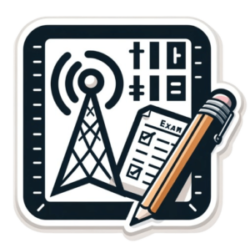
8.1.1 Advanced Theory Exam
Advanced Amateur Radio - Advanced Theory Practice Exam
Step up to the challenge with hamshack.ca's Advanced Theory Practice Exam, designed to evaluate your expertise in critical theoretical aspects of amateur radio. This exam is an integral component of the Advanced Amateur Radio course suite, specifically structured for those preparing for the Advanced License qualification in Canada. It focuses on five key areas:
- Time Constant – Capacitive and Inductive: Testing your understanding of the rate at which capacitors and inductors charge and discharge in a circuit.
- Electrostatic and Electromagnetic Fields, Skin Effect: Assessing your knowledge of field theory and the behavior of high-frequency currents on conductor surfaces.
- Series-Resonance: Examining your grasp of resonance in circuits where inductance and capacitance are aligned in a series configuration.
- Parallel Resonance: Quizzing your understanding of resonance in circuits with parallel-aligned inductance and capacitance.
- Quality Factor (Q): Checking your insight into the 'Q' factor, a dimensionless parameter that describes the damping of resonator modes.
This Advanced Theory Practice Exam pulls 25 questions from the question pool, ensuring a comprehensive test of your knowledge in these fundamental areas. The exam setup supports multiple attempts, offering a thorough learning experience and preparation for the actual certification exam.
Good luck, and enjoy the learning process.
73 Don VE7DXE